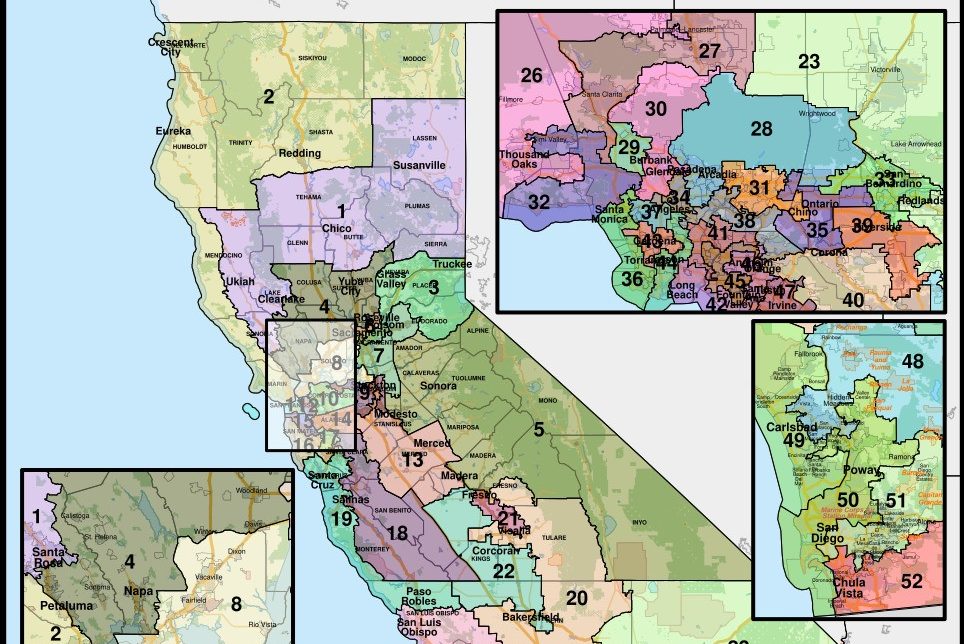
California’s Proposition 50 is a 2025 ballot measure that proposes temporarily replacing the state’s current congressional district map with a new version drawn by the state legislature rather than an independent, third party, which will be decided by California voters on Nov. 4.
However, the entire U.S. only draws new maps every 10 years, in a process known as redistricting. This accounts for population shifts over the course of that time. The proposition also states that the existing independent body, the California Citizens Redistricting Commission (“the Commission”), would resume drawing maps after the 2030 U.S. Census, according to the California Voter Information Guide.
The new map would go into effect from 2026 to 2030. The purpose of this new proposition is to gain more Democratic-leaning congressional seats and more representation in the U.S. House of Representatives for California. The proposed reason for California’s desire to redistrict stems from Texas’s recent successful attempt to redistrict. Texas’s redistricting was enacted on Aug. 29 and ultimately passed new congressional maps.
In order for this goal to be attained, the districts would need to consist of a majority population of democratic voters, to would most likely elect democratic representation. This would allow for a greater number of Democrats in the House of Representatives.
In states like Alabama, Alaska, Kansas, Missouri, New Jersey, New Mexico, New York, North Carolina, Pennsylvania, Tennessee and Utah, state constitutions or statutes make it illegal to redistrict mid-decade. However, there is no clear federal law or any part of the Constitution that prohibits this, according to the U.S. Supreme Court. While redistricting historically typically occurs every 10 years after the census, other states allow for mid-cycle adjustments, sometimes due to court orders or changes in population.
On the other hand, some states like California, Mississippi, Ohio and Texas do not have statutes that prohibit this practice other than after a census.
The majority of the time, this act is utilized as a political tactic for states to gain desired representation in the House, known as gerrymandering.
In July, President Donald Trump urged Texas legislators to redraw the congressional maps to help retain a majority in the House for the 2026 elections. The proposition was signed by Republican Governor Greg Abbott and was taken into effect shortly after.
Out of 28 congressional districts in Texas, Republicans represent 25. In the House of Representatives, there are 219 Republicans and 213 Democrats, with three vacant seats. Additionally, the Senate is made up of 53 Republicans, 45 Democrats and 2 Independents.
Texas recently added 5 new republican representatives as a result of Aug. redistricting, so to combat this, California proposed redistricting as well.
California Governor Gavin Newsom and other Democratic leaders argue that this is a necessary measure to prevent partisan redistricting from growing, where these Republican-controlled maps have been drawn mid-cycle to boost Republican representation.
“We’re doing this in reaction to a president of the United States who called a governor of the state of Texas and said, ‘Find me five seats,’” Newsom said in a press conference.
Additionally, Newsom added that California must fight ‘fire with fire.’
If Proposition 50 is successful, then the map would shift the balance in multiple districts, making some Democrat favored. Adding up to 5 Democratic representatives and reducing the number of competitive races, the longer-term impact is less certain. Many critics argue that it is a “power grab” that undermines Democratic fairness and others believe that this is the proper move.
There is still a debate today with “Vote No on Prop. 50” or “Vote Yes on Prop. 50” signs propped up in neighborhood yards.
Many recognize that, as California has had a clear history of campaigning for independent mapping, they should not be forced to a legislatively-drawn map, which benefits Democrats.
A new Emerson College Polling survey states that California voters find 57% of likely voters support Proposition 50, to authorize temporary changes to the state congressional maps, while 37% oppose the proposition. The rest of the 6% are undecided.
In recent days before the final vote, a majority of California voters are leading in support of combating “Trump’s attempt to rig the midterms in 2026,” Mars Moro, an accountant at a California biotech company reliant on endangered grants from the National Institutes of Health, said, as they speak for a greater “Yes” sum.
“I believe that Newsom is doing the right thing,” Moro said. “Our republic hangs in the balance and we must do everything we can to prevent a full autocratic takeover.”
Additionally, Newsom’s campaign has raised more than $114 million and spent more than $80 million.
The debate of Proposition 50 has spanned all over the United States, with former President Barack Obama appearing in a 30-second ad urging California voters to approve the November ballot proposal.
As Nov. 4 rolls around, voters have to wait and see the results of this proposition. The outcome will not only play a role in the upcoming election, but also reveal the future of gerrymandering and standards for states’ power in redistricting.